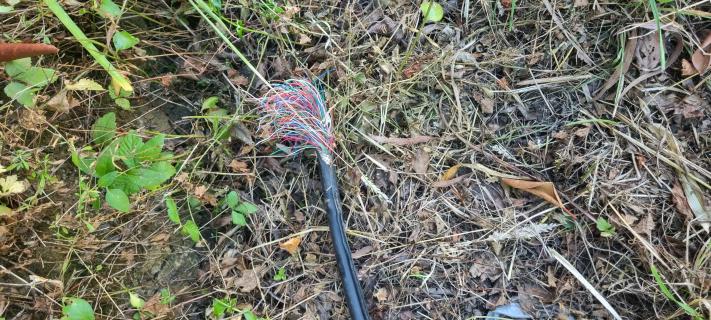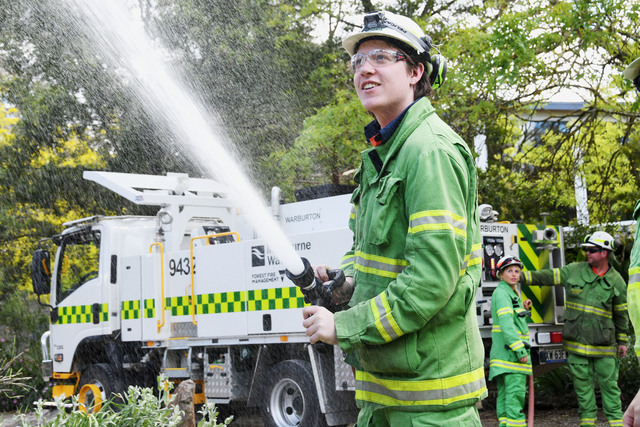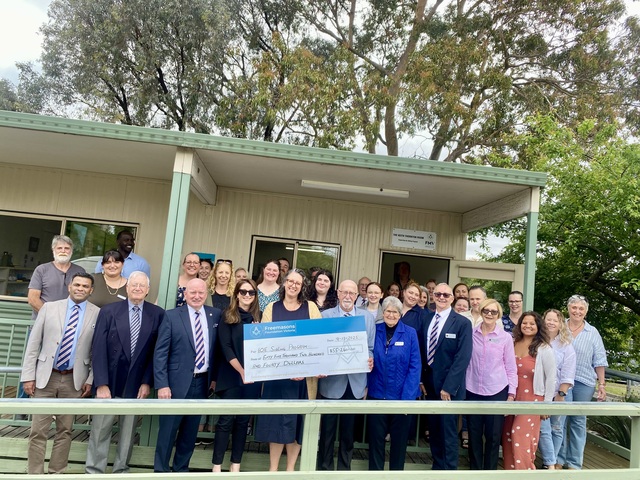Residents in Emerald have called for more reliable internet infrastructure after a recent nbn outage left some without access for days.
A damaged cable near Caroline Crescent and Sydney Avenue at around 4pm on Saturday 21 January meant local Non Blair and her husband, who both work from home, were forced to find another location to work up until Wednesday 25 January.
“We have to walk to the top of the street to pick up a signal, to send a text message or take a call. We normally would use Wi-Fi calling in the house and we’ve got a landline, but none of those are working without the nbn,” Ms Blair said.
“The main thing is that if there was an emergency, we’re in a bushfire zone, and if there was an emergency, you can’t just make a call or send a message.”
“A lot of people have generators now, and we’re used to it, living in the Dandenongs, but there has to be a better way…cables underground or just a way of protecting the infrastructure.”
Another Emerald local, Kate Forster, who was also impacted by the recent outage said the NBN not being classified as an essential service is “extraordinary”.
“They provide us with an NBN that’s totally dependent, or almost totally dependent, on power. There’s four to five hours battery in the node, but after that there’s nothing,” Ms Forster said.
Ms Forster said connection became a significant issue with the storms because people were isolated within their homes for weeks.
“There were some people that got power back on, but they still didn’t have nbn,” she said.
“It seems very unfair for the people without adequate mobile reception that then we haven’t got telecommunications at home, and nbn really needs to change their approach, and they need to work with the telcos.”
Nbn Acting Executive Manager for Victoria and Tasmania, Jessica Cotter, said repairs to the damaged cable were completed on the morning of Wednesday 25 January, and apologised for any delays as nbn worked to “ensure the job was done properly”.
“Undergrounding of the nbn network has been previously discussed as part road upgrade works in Dandenong and Yarra Ranges to increase network resiliency, however putting cabling underground presents several engineering challenges and significant cost,” Ms Cotter said.
“Discussions continue with all levels of Government on how we can ensure in the event of future storms and severe weather events the local community can retain connectivity.”
Ms Cotter said the majority of outages on the nbn network during emergencies are caused by power outages, and equipment connected via the nbn network will not work during a power outage.
Ms Cotter said in times of emergencies, residents and communities can help prepare themselves in the event of a loss of power and potential communication by doing the following:
“Stay mobile: Keep a charged mobile phone and portable mobile battery pack ready to use in a power outage, or if your nbn™ connection is disrupted in an emergency event. Consider turning off cellular data on unnecessary apps to save battery, ” she said.
“Stay updated: Local radio is a good source of information during an emergency, so include a battery powered radio in your emergency communications kit. Also follow emergency services, including your state Fire and Rescue and Police Services, as well as utility companies and nbn (@NBN_Australia) on social media for updates.
“Back up: To make sure you can access important information and essential documents from anywhere, including insurance policies and financial documents, consider creating a digital back up on a USB or in the cloud.”
The $500 million Connecting Victoria program is expected to deliver one mobile tower in Menzies Creek and another in Silvan.







